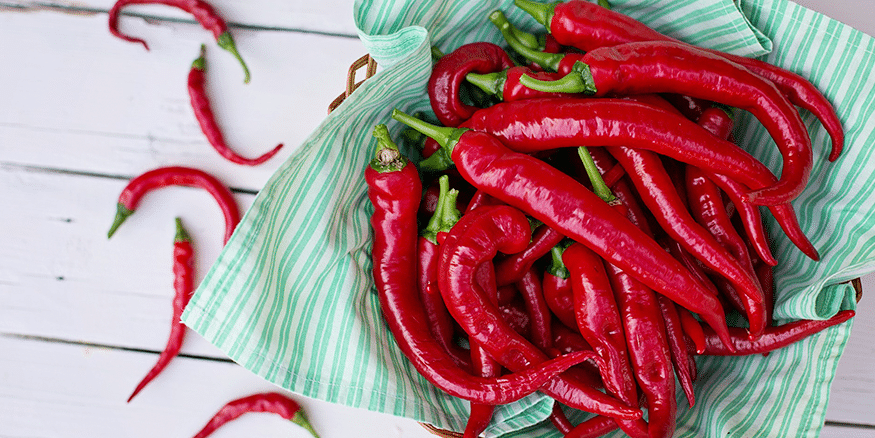
Pepper Burn and Inflammation Share Pain Signal
A breakthrough in understanding pain receptors has shown a link between the heat generated by chilli peppers and the painful heat generated by inflammation. This finding may lead to new pain treatments.
As a hot pepper is digested, a cell receptor, known as TRPV1, responds to capsaicin, the chemical that makes peppers hot. This receptor also responds to actual heat – not just the chilli pepper kind – and low pH levels, which are related to inflammation.
It seems that a molecule called p38 is involved in the increased production of TRPV1 in response to inflammation, which can cause levels of TRPV1 to rise about 20 times higher than normal. Although p38 leads to increased production of TRPV1, the researchers did not detect a corresponding increase in the activity of the gene for TRPV1. This means that the ‘chilli pepper receptor’ is being regulated not by the expression of its gene but by a signal that increases the production of the protein.
Therefore, a possible new approach for treating pain is by blocking the p38 signal. In animal tests, blocking p38 reduced the over-sensitivity to heat that can be caused by inflammation. However, it did not affect other responses, including swelling or sensitivity to pain, according to a report on the findings in a fall 2002 issue of the journal Neuron. (Neuron 2002;36:57-68) This could explain why people with arthritis, inflammatory bowel disease, and other types of pain tend to be very sensitive to heat, as it is a feature of inflammatory pain.
The researchers hope to collaborate with the pharmaceutical industry to develop an effective inhibitor of p38 that would be safe in people.
As a note of interest, high chilli pepper use, decreased fresh fruit intake, and poverty have been linked to an increased gallbladder cancer risk.

